the Style of Art Known as Neoclassicism Demands All of the Following Except
| Peak: The Petit Trianon (Versailles, France), 1764, by Ange-Jacques Gabriel; Centre: The Salon de Compagnie of the Petit Trianon; Bottom: Arc de Triomphe du Carrousel (Paris), 1806–1808, by Pierre-François-Léonard Fontaine | |
| Years active | 18th century–mid-20th century |
|---|---|
Neoclassical compages is an architectural style produced by the Neoclassical movement that began in the mid-18th century in Italian republic and France. Information technology became one of the most prominent architectural styles in the Western world.[ane] The prevailing styles of compages in virtually of Europe for the previous two centuries, Renaissance architecture and Baroque architecture, already represented fractional revivals of the Classical compages of ancient Rome and (much less) ancient Greek architecture, but the Neoclassical motion aimed to strip away the excesses of Late Baroque and return to a purer and more authentic classical way, adjusted to mod purposes.
The evolution of archæology and published accurate records of surviving classical buildings was crucial in the emergence of Neoclassical architecture. In many countries at that place was an initial wave substantially drawing on Roman architecture, followed, from almost the starting time of the 19th century, by a second wave of Greek Revival architecture. This followed increased understanding of Greek survivals. Every bit the 19th century continued, the style tended to lose its original rather austere purity in variants like the French Empire style. The term "neoclassical" is often used very loosely for whatever building using some of the classical architectural vocabulary.
In grade, Neoclassical architecture emphasizes the wall rather than chiaroscuro and maintains separate identities to each of its parts. The way is manifested both in its details every bit a reaction against the Rococo fashion of naturalistic ornament, and in its architectural formulae equally an outgrowth of some classicizing features of the Late Baroque architectural tradition. Therefore, the way is defined by symmetry, unproblematic geometry, and social demands instead of ornament.[2] In the 21st century a version of the style continues, sometimes chosen New Classical architecture or New Classicism.
History [edit]
Neoclassical architecture is a specific way and moment in the late 18th and early 19th centuries that was specifically associated with the Enlightenment, empiricism, and the study of sites by early on archaeologists.[3] Classical architecture subsequently about 1840 must be classified as 1 of a series of "revival" styles, such every bit Greek, Renaissance, or Italianate. Various historians of the 19th century have made this clear since the 1970s. Classical architecture during the twentieth century is classified less every bit a revival, and more a render to a style was decelerated with the advent of Modernism. Yet still Neoclassical architecture is beginning to be expert again in 20-first Century more in the class of New Classical Architecture and even in Gentrification and Historicism Architecture, the Neoclassical architecture or its important elements are nonetheless being used, even when the Postmodernist architecture is dominant throughout the earth.
Palladianism [edit]

A render to more than classical architectural forms as a reaction to the Rococo style tin exist detected in some European architecture of the before 18th century, most vividly represented in the Palladian architecture of Georgian United kingdom of great britain and northern ireland and Republic of ireland. The name refers to the designs of the 16th-century Venetian builder Andrea Palladio.
The Bizarre mode had never truly been to the English gustatory modality. 4 influential books were published in the first quarter of the 18th century which highlighted the simplicity and purity of classical architecture: Vitruvius Britannicus by Colen Campbell (1715), Palladio'south I quattro libri dell'architettura (The Four Books of Architecture, 1715), De re aedificatoria past Leon Battista Alberti (offset published in 1452) and The Designs of Inigo Jones... with Some Boosted Designs (1727). The most popular was the four-volume Vitruvius Britannicus by Colen Campbell. The book contained architectural prints of famous British buildings that had been inspired past the bang-up architects from Vitruvius to Palladio. At offset the book mainly featured the work of Inigo Jones, simply the afterward tomes contained drawings and plans by Campbell and other 18th-century architects. Palladian architecture became well established in 18th-century Britain.
At the forefront of the new school of pattern was the aristocratic "architect earl", Richard Boyle, 3rd Earl of Burlington; in 1729, he and William Kent designed Chiswick Firm. This house was a reinterpretation of Palladio's Villa Capra "La Rotonda", but purified of 16th-century elements and ornament. This severe lack of ornamentation was to be a feature of Palladianism. In 1734, William Kent and Lord Burlington designed one of England'south finest examples of Palladian architecture, Holkham Hall in Norfolk. The main block of this house followed Palladio's dictates quite closely, merely Palladio's low, often detached, wings of farm buildings were elevated in significance.
This classicizing vein was also detectable, to a bottom caste, in the Belatedly Baroque architecture in Paris, such as in the Louvre Colonnade. This shift was even visible in Rome at the redesigned façade for Archbasilica of Saint John Lateran.
Neoclassicism [edit]

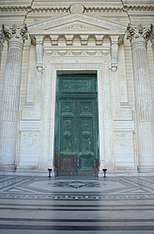
By the mid-18th century, the movement broadened to comprise a greater range of classical influences, including those from Ancient Greece. An early middle of neoclassicism was Italy, peculiarly Naples, where by the 1730s court architects such as Luigi Vanvitelli and Ferdinando Fuga were recovering classical, Palladian and Mannerist forms in their Baroque architecture. Following their lead, Giovanni Antonio Medrano began to build the first truly neoclassical structures in Italian republic in the 1730s. In the aforementioned period, Alessandro Pompei introduced neoclassicism to the Venetian Republic, edifice one of the first lapidariums in Europe in Verona, in the Doric style (1738). During the same menstruation, neoclassical elements were introduced to Tuscany by architect Jean Nicolas Jadot de Ville-Issey, the courtroom architect of Francis Stephen of Lorraine. On Jadot's atomic number 82, an original neoclassical way was adult by Gaspare Maria Paoletti, transforming Florence into the nigh important centre of neoclassicism in the peninsula. In the second half of the century, Neoclassicism flourished also in Turin, Milan (Giuseppe Piermarini) and Trieste (Matteo Pertsch). In the latter two cities, just as in Tuscany, the sober neoclassical style was linked to the reformism of the ruling Habsburg enlightened monarchs.
The shift to neoclassical architecture is conventionally dated to the 1750s. It first gained influence in England and France; in England, Sir William Hamilton's excavations at Pompeii and other sites, the influence of the Grand Bout, and the work of William Chambers and Robert Adam, were pivotal in this regard. In France, the movement was propelled by a generation of French fine art students trained in Rome, and was influenced by the writings of Johann Joachim Winckelmann. The style was also adopted by progressive circles in other countries such as Sweden and Russia.
International neoclassical compages was exemplified in Karl Friedrich Schinkel's buildings, especially the Altes Museum in Berlin, Sir John Soane's Bank of England in London and the newly built White House and Capitol in Washington, D.C. of the nascent American Republic. The manner was international. The Baltimore Basilica, which was designed by Benjamin Henry Latrobe in 1806, is considered one of the finest examples of neoclassical architecture in the world.
A second neoclassic wave, more severe, more studied and more consciously archaeological, is associated with the superlative of the First French Empire. In French republic, the first stage of neoclassicism was expressed in the Louis 16 style, and the second in the styles chosen Directoire and Empire. Its major proponents were Percier and Fontaine, court architects who specialized in interior ornamentation.[5]
In the decorative arts, neoclassicism is exemplified in French furniture of the Empire style; the English furniture of Chippendale, George Hepplewhite and Robert Adam, Wedgwood's bas reliefs and "black basaltes" vases, and the Biedermeier furniture of Austria. The Scottish architect Charles Cameron created palatial Italianate interiors for the German-built-in Catherine Two the Great in Leningrad.[vi]
-

-

-
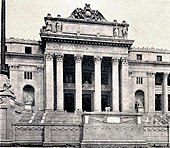
Legislative Building Manila
Interior design [edit]
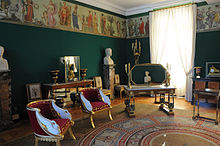
Indoors, neoclassicism made a discovery of the 18-carat archetype interior, inspired by the rediscoveries at Pompeii and Herculaneum. These had begun in the late 1740s, but merely achieved a wide audition in the 1760s, with the kickoff luxurious volumes of tightly controlled distribution of Le Antichità di Ercolano Esposte (The Antiquities of Herculaneum Exposed). The antiquities of Herculaneum showed that even the most classicizing interiors of the Baroque, or the most "Roman" rooms of William Kent were based on basilica and temple exterior architecture turned exterior in, hence their oftentimes flatulent appearance to modern eyes: pedimented window frames turned into gilded mirrors, fireplaces topped with temple fronts.
The new interiors sought to recreate an authentically Roman and genuinely interior vocabulary. Techniques employed in the style included flatter, lighter motifs, sculpted in depression frieze-like relief or painted in monotones en camaïeu ("like cameos"), isolated medallions or vases or busts or bucrania or other motifs, suspended on swags of laurel or ribbon, with slender arabesques against backgrounds, mayhap, of "Pompeiian red" or pale tints, or stone colours. The style in France was initially a Parisian style, the goût grec ("Greek gustatory modality"), non a court style; when Louis 16 acceded to the throne in 1774, Marie Antoinette, his fashion-loving Queen, brought the Louis Sixteen style to court.
However, there was no existent endeavour to utilise the basic forms of Roman furniture until around the turn of the century, and article of furniture-makers were more likely to infringe from aboriginal architecture, just as silversmiths were more likely to take from ancient pottery and rock-carving than metalwork: "Designers and craftsmen ... seem to have taken an nigh perverse pleasure in transferring motifs from i medium to another".[7]
A new phase in neoclassical pattern was inaugurated by Robert and James Adam, who travelled in Italia and Dalmatia in the 1750s, observing the ruins of the classical world. On their return to Britain, they published a book entitled The Works in Compages in installments betwixt 1773 and 1779. This volume of engraved designs made the Adam manner available throughout Europe. The Adam brothers aimed to simplify the Rococo and Baroque styles which had been stylish in the preceding decades, to bring what they felt to be a lighter and more than elegant experience to Georgian houses. The Works in Compages illustrated the principal buildings the Adam brothers had worked on and crucially documented the interiors, article of furniture and fittings, designed by the Adams.
-

Dining room of the Centralhotel (Berlin), designed in 1881 by von der Hude & Hennicke
Greek Revival [edit]
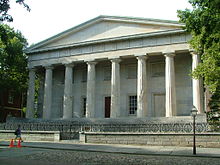
From nearly 1800 a fresh influx of Greek architectural examples, seen through the medium of etchings and engravings, gave a new impetus to neoclassicism, the Greek Revival. In that location was little direct knowledge of surviving Greek buildings before the middle of the 18th century in Western Europe, when an trek funded by the Gild of Dilettanti in 1751 and led past James Stuart and Nicholas Revett began serious archaeological enquiry. Stuart was commissioned after his render from Greece by George Lyttelton to produce the first Greek building in England, the garden temple at Hagley Hall (1758–59).[eight] A number of British architects in the second one-half of the century took up the expressive challenge of the Doric from their aristocratic patrons, including Joseph Bonomi and John Soane, but information technology was to remain the private enthusiasm of connoisseurs upwards to the showtime decade of the 19th century.[9]
Seen in its wider social context, Greek Revival architecture sounded a new note of sobriety and restraint in public buildings in United kingdom around 1800 equally an assertion of nationalism attendant on the Act of Union, the Napoleonic Wars, and the clamour for political reform. Information technology was to be William Wilkins's winning pattern for the public competition for Downing Higher, Cambridge, that announced the Greek way was to be the dominant idiom in architecture. Wilkins and Robert Smirke went on to build some of the nearly important buildings of the era, including the Theatre Royal, Covent Garden (1808–1809), the General Mail Office (1824–1829) and the British Museum (1823–1848), Wilkins University College London (1826–1830) and the National Gallery (1832–1838). In Scotland, Thomas Hamilton (1784–1858), in collaboration with the artists Andrew Wilson (1780–1848) and Hugh William Williams (1773–1829) created monuments and buildings of international significance; the Burns Monument at Alloway (1818) and the (Royal) High School in Edinburgh (1823–1829).
At the aforementioned fourth dimension the Empire style in France was a more grandiose wave of neoclassicism in architecture and the decorative arts. Mainly based on Regal Roman styles, it originated in, and took its proper noun from, the dominion of Napoleon I in the Outset French Empire, where it was intended to idealize Napoleon'southward leadership and the French state. The style corresponds to the more than conservative Biedermeier style in the High german-speaking lands, Federal mode in the United States, the Regency style in Britain, and the Napoleonstil in Sweden. According to the art historian Hugh Honor "so far from beingness, every bit is sometimes supposed, the culmination of the Neo-classical movement, the Empire marks its rapid decline and transformation dorsum once more into a mere antique revival, tuckered of all the loftier-minded ideas and force of confidence that had inspired its masterpieces".[10]
Characteristics [edit]

The L'Enfant Programme for Washington, D.C., as revised by Andrew Ellicott in 1792.
High neoclassicism was an international motility. Architects reacted against the excesses and profuse ornament used in Tardily Baroque architecture. The new "classical" architecture emphasized planar qualities, rather than elaborate sculptural ornamentation in both the interior and the exterior. Projections and recessions and their furnishings of light and shade were more than flat; sculptural bas-reliefs were flat and tended to be framed by friezes, tablets or panels. This was the first "stripped downwards" classical architecture, and appeared to be modern in the context of the Revolutionary period in Europe. At its near elemental, as in the work of Etienne-Louis Boullée, it was highly abstract and geometrically pure.[11]
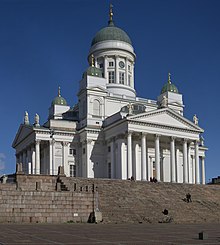
Neoclassicism also influenced city planning. The aboriginal Romans had used a consolidated scheme for city planning for both defence force and ceremonious convenience; however, the roots of this scheme become back to even older civilizations. At its most basic, the grid system of streets, a primal forum with urban center services, two master slightly wider boulevards, and the occasional diagonal street were characteristic of the very logical and orderly Roman pattern. Ancient façades and building layouts were oriented to these urban center blueprint patterns and they tended to work in proportion with the importance of public buildings.
Many of these urban planning patterns found their way into the first modernistic planned cities of the 18th century. Exceptional examples include Karlsruhe, Washington, D.C., Saint Petersburg, Buenos Aires, Havana, and Barcelona. Contrasting models may be institute in Modernist designs exemplified by Brasília, the Garden city move, and levittowns.
Regional trends [edit]
U.k. and Ireland [edit]
From the middle of the 18th century, exploration and publication inverse the grade of British architecture towards a purer vision of the Ancient Greco-Roman ideal. James 'Athenian' Stuart'south work The Antiquities of Athens and Other Monuments of Hellenic republic was very influential in this regard, as were Robert Wood's Palmyra and Baalbec. A combination of simple forms and high levels of enrichment was adopted by the majority of contemporary British architects and designers. The revolution begun by Stuart was shortly to be eclipsed by the piece of work of the Adam brothers, James Wyatt, Sir William Chambers, George Dance, James Gandon, and provincially based architects such as John Carr and Thomas Harrison of Chester.
In Scotland and the northward of England, where the Gothic Revival was less strong, architects continued to develop the neoclassical manner of William Henry Playfair. The works of Cuthbert Brodrick and Alexander Thomson show that past the end of the 19th century the results could be powerful and eccentric.
In Republic of ireland, where Gothic Revival was likewise less pop, a refined, restrained form of the neoclassical developed, and can be seen in the works of James Gandon and other architects working at the time. Information technology is particularly evident in Dublin, which is a largely neoclassical and Georgian urban center.
-

-
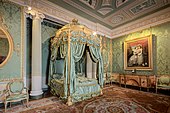
-
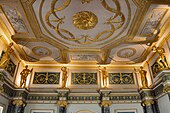
Interior of Syon Business firm (London) with Ionic columns and gilded statues, 1767–1775, by Robert Adam
-

Dining room of Syon House, with a complex ceiling
-

-

Buildings in Lower O'Connell Street (Dublin) constructed between 1918 and 1923 in the highly refined and aesthetically restrained fashion typical of the Irish gaelic capital
-
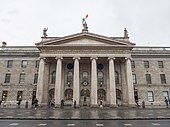
The Greek hexastyle portico of the Full general Post Role (Dublin) completed in 1818
-

The western front of St George'southward Hall in Liverpool from St. John'due south Gardens
-
France [edit]
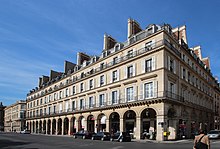
The first phase of neoclassicism in France is expressed in the Louis Xv way of architect Ange-Jacques Gabriel (Petit Trianon, 1762–1768); the second stage, in the styles chosen Directoire and Empire, might exist characterized by Jean Chalgrin's severe astylar Arc de Triomphe (designed in 1806). In England the two phases might exist characterized commencement past the structures of Robert Adam, the second by those of Sir John Soane. The interior fashion in French republic was initially a Parisian style, the "Goût grec" ("Greek style") not a courtroom mode. Only when the young rex acceded to the throne in 1774 did Marie Antoinette, his fashion-loving Queen, bring the Louis XVI fashion to court.
Many early 19th-century neoclassical architects were influenced past the drawings and projects of Étienne-Louis Boullée and Claude Nicolas Ledoux. The many graphite drawings of Boullée and his students draw spare geometrical architecture that emulates the eternality of the universe. There are links betwixt Boullée's ideas and Edmund Burke'due south conception of the sublime. Ledoux addressed the concept of architectural character, maintaining that a edifice should immediately communicate its role to the viewer: taken literally, such ideas give rise to architecture parlante ("speaking compages").
From about 1800 a fresh influx of Greek architectural examples, seen through the medium of etchings and engravings, gave a new impetus to neoclassicism that is called the Greek Revival. Although several European cities – notably Saint Petersburg, Athens, Berlin and Munich – were transformed into veritable museums of Greek revival architecture, the Greek Revival in France was never popular with either the state or the public.
Greece [edit]
After the institution of the Kingdom of Greece in 1832, the architecture of Greece was mostly influenced by the Neoclassical architecture. For Athens, the starting time King of Hellenic republic, Otto I, commissioned the architects Stamatios Kleanthis and Eduard Schaubert to design a modern city plan. The Onetime Royal Palace was the start important public building to be congenital, between 1836 and 1843. Subsequently, in the mid- and belatedly 19th century, Theophil von Hansen and Ernst Ziller took part in the construction of many neoclassical buildings. Theophil von Hansen designed his outset building, the National Observatory of Athens, and two of the iii contiguous buildings forming the so-called "Athens Classical Trilogy", namely the Academy of Athens (1859) and the National Library of Greece (1888), the third building of the trilogy being the National and Capodistrian University of Athens (1843), which was designed past his brother Christian Hansen. Besides he designed the Zappeion Hall (1888). Ernst Ziller as well designed many private mansions in the centre of Athens which gradually became public, usually through donations, such the mansion of Heinrich Schliemann, Iliou Melathron (1880). The urban center of Nauplio is also an of import case of Neoclassical compages forth with the isle of Poros.
Hungary [edit]

The earliest examples of neoclassical architecture in Hungary may be constitute in Vác. In this town the triumphal arch and the neoclassical façade of the Baroque Cathedral were designed past the French architect Isidor Marcellus Amandus Ganneval (Isidore Canevale) in the 1760s. Besides the piece of work of a French architect, Charles Moreau, is the garden façade of the Esterházy Palace (1797–1805) in Kismarton (today Eisenstadt in Austria).
The two principal architects of Neoclassicism in Hungary were Mihály Pollack and József Hild. Pollack's major work is the Hungarian National Museum (1837–1844). Hild is famous for his designs for the Cathedral of Eger and Esztergom. The Reformed Great Church of Debrecen is an outstanding example of the many Protestant churches that were built in the first one-half of the 19th century. This was the fourth dimension of the showtime iron structures in Hungarian architecture, the virtually of import of which is the Concatenation Bridge (Budapest) past William Tierney Clark.
Republic of malta [edit]

Neoclassical architecture was introduced in Malta in the tardily 18th century, during the final years of Hospitaller dominion. Early examples include the Bibliotheca (1786),[12] the De Rohan Arch (1798)[13] and the Hompesch Gate (1801).[fourteen] However, neoclassical architecture only became pop in Malta following the establishment of British rule in the early 19th century. In 1814, a neoclassical portico decorated with the British coat of arms was added to the Main Baby-sit building and then as to serve equally a symbol of British Malta. Other 19th-century neoclassical buildings include the Monument to Sir Alexander Brawl (1810), RNH Bighi (1832), St Paul'southward Pro-Cathedral (1844), the Rotunda of Mosta (1860) and the at present-destroyed Royal Opera House (1866).[fifteen]
Neoclassicism gave manner to other architectural styles by the late 19th century. Few buildings were congenital in the neoclassical style during the 20th century, such as the Domvs Romana museum (1922),[16] and the Courts of Justice building in Valletta (1965–1971).[17]
Shine–Lithuanian Commonwealth [edit]

The heart of Smoothen Neoclassicism was Warsaw under the rule of the last Polish king, Stanislaus Augustus. The Academy of Vilnius was another of import centre of the Neoclassical architecture in Europe, led by the notable professors of architecture Marcin Knackfus, Laurynas Gucevicius and Karol Podczaszyński. The fashion was expressed in the shape of main public buildings, such as the University'south Observatory, Vilnius Cathedral and the town hall.
The best-known architects and artists, who worked in Polish–Lithuanian Democracy were Dominik Merlini, Jan Chrystian Kamsetzer, Szymon Bogumił Zug, Jakub Kubicki, Antonio Corazzi, Efraim Szreger, Chrystian Piotr Aigner and Bertel Thorvaldsen.
Russia [edit]
In the Russian Empire at the end of the 19th century, neoclassical architecture was equal to Saint Petersburg compages because this style was specific for a huge number of buildings in the city. Catherine the Great adopted the style during her reign by allowing the architect Jean-Baptiste Vallin de la Mothe to build the Sometime Hermitage and the Academy of Fine Arts in Saint Petersburg.[two]
Spain [edit]

Castilian Neoclassicism was exemplified by the work of Juan de Villanueva, who adapted Burke'south theories of beauty and the sublime to the requirements of Spanish climate and history. He built the Museo del Prado, which combined iii functions: an academy, an auditorium, and a museum in one building with three divide entrances.
This was part of the ambitious program of Charles III, who intended to brand Madrid the Majuscule of the Arts and Sciences. Very close to the museum, Villanueva built the Royal Observatory of Madrid. He also designed several summer houses for the kings in El Escorial and Aranjuez and reconstructed the Plaza Mayor, Madrid, amongst other important works. Villanueva's pupils expanded the Neoclassical manner in Spain.
Germany [edit]

Neoclassical compages became a symbol of national pride during the 18th century in Federal republic of germany, in what was and then Prussia. Karl Friedrich Schinkel built many notable buildings in this style, including the Altes Museum in Berlin. While the metropolis remained dominated by Baroque urban center planning, his architecture and functional way provided the urban center with a distinctly neoclassical eye.
Schinkel'south piece of work is very comparable to Neoclassical compages in Britain since he drew much of his inspiration from that country. He made trips to observe the buildings and develop his functional style.[2]
United States [edit]
In the new republic, Robert Adam's neoclassical manner was adjusted for the local late 18th- and early 19th-century style, called Federal compages. Ane of the pioneers of this way was the English language-born Benjamin Henry Latrobe, who is often noted equally i of America's starting time formally trained professional architects and the father of American compages. The Baltimore Basilica, the first Roman Catholic cathedral in the United States, is considered past many experts to be Latrobe's masterpiece.
Another notable American architect who identified with Federal architecture was Thomas Jefferson. He built many neoclassical buildings including his personal estate Monticello, the Virginia Country Capitol, and the University of Virginia.[two]
A second neoclassical mode constitute in the United States during the 19th century was called Greek Revival architecture. Information technology differs from Federal architecture as it strictly follows the Greek idiom, withal it was used to describe all buildings of the Neoclassicism menstruation that display classical orders.[18]
-

The University of Virginia Rotunda, an example of the Neoclassical architecture Thomas Jefferson built on campus.
-
-
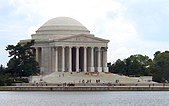
Jefferson Memorial in Washington D.C (1939-1943)
Mexico [edit]
As function of the Castilian Enlightenment's cultural impact on New Espana, the crown established the University of San Carlos in 1785 to train painters, sculptors, and architects in New Espana, under the direction of the peninsular Spaniard Gerónimo Antonio Gil.[xix] The university emphasized neoclassicism, which drew on the inspiration of the make clean lines of Greek and Roman architecture. Neoclassicism in architecture was direct linked to crown policies that sought to rein in the exuberance of the Baroque, considered in "bad taste" and creating public buildings of "good taste" funded past the crown, such every bit the Palacio de Minería in Mexico City and the Hospicio Cabañas in Guadalajara, and the Alhóndiga de Granaditas in Guanajuato, all congenital in the late colonial era.[twenty]
-
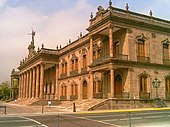
-
Hospicio Cabañas (Guadalajara), congenital between 1805–1845, is one of the oldest and largest hospital complexes in the Americas.
Residue of Latin America [edit]
The Neoclassical style arrived in the American empires of Spain and Portugal through projects designed in Europe or carried out locally past European or Criollo architects trained in the academies of the city. In that location are also examples of the adaptation to the local architectural language, which during previous centuries had made a synthesis or syncretism of European and pre-Columbian elements in the so-called Colonial Baroque.
To more Classical criteria belong, in Chile, the Palacio de La Moneda (1784-1805) and the Metropolitan Cathedral of Santiago (1748-1899), both works past the Italian builder Joaquín Toesca. In Ecuador, the Quito's Palacio de Carondelet (Ecuador'southward Authorities Palace) congenital betwixt 1611–1801 by Antonio García. At the dawn of the independence of Hispanic America, constructive programs were developed in the new republics. Neoclassicism was introduced in New Granada[ disambiguation needed ] by Marcelino Pérez de Arroyo. Later, in Colombia, the Capitolio Nacional was congenital in Bogotá between 1848–1926 by Thomas Reed, trained at the Berlin Bauakademie; the Primatial Cathedral of Bogotá (1807–1823), designed past Friar Domingo de Petrés; and in Peru the Basilica Cathedral of Arequipa congenital betwixt 1540–1844 by Lucas Poblete.
Brazil, which became the seat of the court of the Portuguese monarchy, gaining independence from its metropolis as the Empire of Brazil, too used the resources of compages for the glorification of political power, and it was decided to resort to architects trained in the Académie royale d'architecture. To this period vest the portal of the Regal Academy of Fine Arts in Rio de Janeiro made in 1826 and the Imperial Palace of Petrópolis built between 1845–1862.
Argentine republic is another of the countries that seeks to shed its colonial past, but in the context of the reorganization of the country afterward independence in 1810, an attribute of power is sought that transmits the presence of the State, inspiring respect and devotion, including of course the compages. Yet, an image of its own is non conceived, but the Classical canon is introduced, not in the form of a replica of buildings from Antiquity, just with a classical predominance and a lot of influence from French Classicism; which will last until the 20th century.
Philippines [edit]
Similar most western tradition, it arrived in the Archipelago via Manila galleon from Acapulco every bit one of the best preferred architecture in the Spanish east indies, manifested in Churches, Civic buildings and 1 of the popular architectural ornament for native houses, specifically Bahay na bato and Bahay kubo. When the power over the archipelago was transferred from Spain to the United States of America, the style even became more popular and developed from slightly elementary approach during the Spanish era, to a more grandeur mode of the Beaux-Arts architecture sparked by the return of massive number of native architectural students to the islands from the western schools. Information technology also became a symbol of democracy and the approaching republic during the commonwealth.
Encounter as well [edit]
- New classical architecture
- Neoclassical architecture in Milan
- Outline of classical architecture
- Federal architecture
- Nordic Classicism
- John Carr (architect)
- William Chambers (architect)
References [edit]
- ^ "Neoclassical architecture". Encyclopædia Britannica . Retrieved 7 July 2017.
- ^ a b c d Middleton, Robin. (1993). Neoclassical and 19th century architecture. Electa. ISBN0-8478-0850-v. OCLC 444534819.
- ^ See, for instance, Joseph Rykwert, The First Moderns: the architects of the eighteenth century (Cambridge, MIT Press: 1980) and Alberto Perez Gomez, Compages and the Crisis of Modern Science, (Cambridge, MIT Press: 1983)
- ^ "Andrea Palladio 1508–1580". Irish Architectural Archive. 2010. Retrieved 23 September 2018.
- ^ Barry Bergdoll, Ed., The Complete Works of Percier and Fontaine, (New York, Princeton Architectural Press: 2018)
- ^ "Neoclassical Architecture (1640–1850)". www.visual-arts-cork.com . Retrieved 7 July 2017.
- ^ Accolade, 110–111, 110 quoted
- ^ Though Giles Worsley detects the beginning Grecian influenced architectural element in the windows of Nuneham Park from 1756, encounter Giles Worsley, "The First Greek Revival Architecture", The Burlington Magazine, Vol. 127, No. 985 (April 1985), pp. 226–229.
- ^ Joseph Mordant Crook, The Greek Revival: neoclassical attitudes in British architecture, 1760–1870 (London, John Murray: 1972)
- ^ Honour, 171–184, 171 quoted
- ^ Robin Middleton and David Watkin, NeoClassical and Nineteenth Century Architecture2 vols. (New York, Electa/Rizzoli: 1987)
- ^ "Bibliotheca" (PDF). National Inventory of the Cultural Property of the Maltese Islands. 28 December 2012. Archived from the original (PDF) on 6 December 2015.
- ^ "Rohan Gate, Żebbuġ". Times of Malta. 11 December 2012. Archived from the original on 4 December 2015.
- ^ Bötig, Klaus (2011). Malta, Gozo. Con atlante stradale (in Italian). EDT srl. p. 54. ISBN9788860407818.
- ^ "Architecture in Malta under the British". culturemalta.org. Archived from the original on 7 October 2015.
- ^ "Domvs Romana". Heritage Malta. Archived from the original on 5 Jan 2015.
- ^ "The Courts". The Judiciary – Malta. Archived from the original on 6 January 2015.
- ^ Pierson, William Harvey, 1911– (1976). American buildings and their architects. Anchor Printing/Doubleday. OCLC 605187550.
{{cite volume}}: CS1 maint: multiple names: authors list (link) - ^ Jean Charlot, Mexican Art and the Academy of San Carlos, 1785–1915. Austin: Academy of Texas Printing 1962, p. 25
- ^ James Oles, Art and Architecture in Mexico. London: Thames and Hudson 2013, pp.132–33, 150.
- ^ "Museo Manuel Tolsá - Palacio de Minería de la FI UNAM". museu.ms (in Spanish).
- ^ "Datos curiosos de la Parroquia de San José Iturbide". iturbide.travel (in Spanish). ten July 2019.
Further reading [edit]
- Détournelle, Athanase, Recueil d'architecture nouvelle, A Paris : Chez l'auteur, 1805
- Groth, Håkan, Neoclassicism in the N: Swedish Furniture and Interiors, 1770–1850
- Honour, Hugh, Neoclassicism
- Irwin, David, Neoclassicism (in series Art and Ideas) Phaidon, paperback, 1997
- Lorentz, Stanislaw, Neoclassicism in Poland (Series History of art in Poland)
- McCormick, Thomas, Charles-Louis Clérisseau and the Genesis of Neoclassicism Architectural History Foundation, 1991
- Praz, Mario. On Neoclassicism
External links [edit]
- Found of Classical Compages and Art
- Traditional Architecture Group
- OpenSource Classicism – projection for costless educational content well-nigh neoclassical architecture
ayalathencestraes.blogspot.com
Source: https://en.wikipedia.org/wiki/Neoclassical_architecture





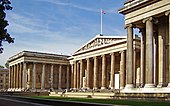



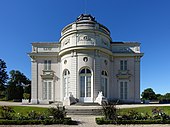
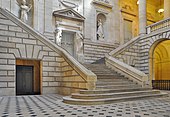
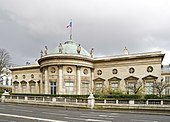











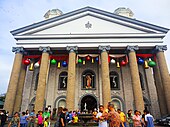




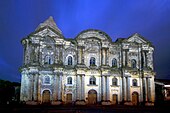
Posting Komentar untuk "the Style of Art Known as Neoclassicism Demands All of the Following Except"